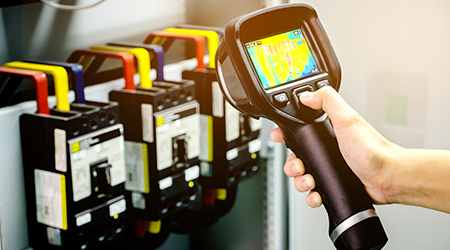First available in the 1960s, when it was used to survey high-voltage power lines, advances in infrared imaging technology have enabled the systems to evolve from backpack-sized units that required cryogenic cooling systems to today’s handheld systems, according to an article from Facility Maintenance Decisions on the FacilitiesNet website.
The latest generation of infrared systems use a sensor that operates at ambient temperature and requires no external cooling, while producing improved image quality.
The use of infrared imaging allows managers to take a more proactive approach to maintenance. Instead of having to wait for equipment to fail, technicians can use non-invasive, non-destructive monitoring to detect abnormal heat buildup without having to take it off-line.
The latest generation of infrared imaging systems offers increased resolution, among other advances. Today’s high-resolution systems have a 640x480 detector with 307,200 pixels, some offering four times the resolution of earlier detectors. Higher resolution means clearer images, better measurement accuracy, a larger field of view, and the ability to generate images of distant targets.

 Grounding Healthcare Spaces in Hospitality Principles
Grounding Healthcare Spaces in Hospitality Principles UC Davis Health Selects Rudolph and Sletten for Central Utility Plant Expansion
UC Davis Health Selects Rudolph and Sletten for Central Utility Plant Expansion Cape Cod Healthcare Opens Upper 2 Floors of Edwin Barbey Patient Care Pavilion
Cape Cod Healthcare Opens Upper 2 Floors of Edwin Barbey Patient Care Pavilion Building Sustainable Healthcare for an Aging Population
Building Sustainable Healthcare for an Aging Population Froedtert ThedaCare Announces Opening of ThedaCare Medical Center-Oshkosh
Froedtert ThedaCare Announces Opening of ThedaCare Medical Center-Oshkosh